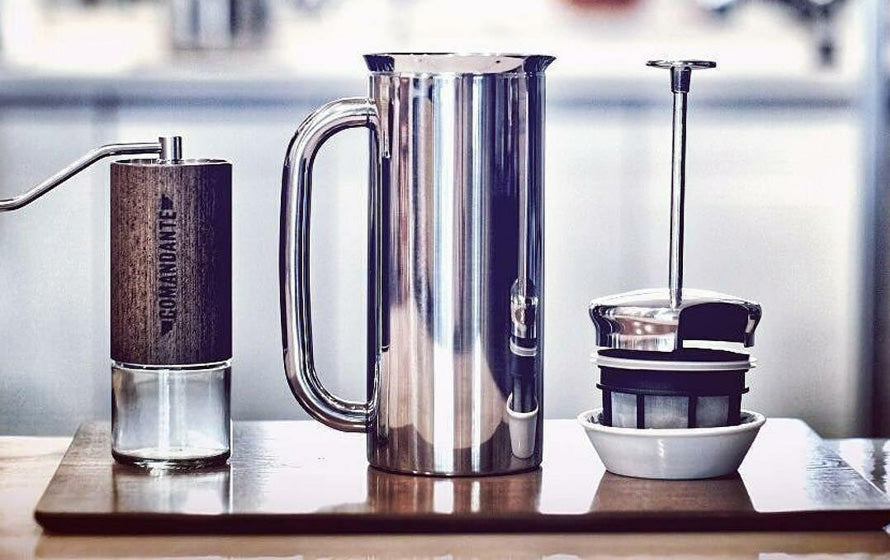A common morning disappointment is opening up a fresh bag of coffee, smelling the rich aromas, and brewing a cup—only to find it tastes thin, incomplete, or weak. That’s the worst.
Thankfully, one bad cup doesn’t mean that coffee’s a dud, or that you have to suffer through the whole bag even if you’re not a big fan.
Let’s walk through the three simple ways you can brew stronger coffee that matches your taste preferences. We’ll cover things like…
- How we define “strong” (it doesn’t mean the same thing it used to)
- Which coffee makers are better at strong coffee flavors
- Why just adding more coffee doesn’t always work
By the end, you’ll have everything you need to fix weak coffee like the pros. Ready?
What “Strong Coffee” Really Means
There’s some confusion about what really makes coffee tastes “strong” that goes back to when just about all coffee would have been considered bitter by modern standards. We need to clear that up first.
Before the early 2000s (or so), most people thought coffee tastes… well, “like coffee”. There was no such thing as a fruity Ethiopian bean or a floral Peruvian coffee. The dominant flavor notes were overwhelmingly: earthy, chocolate, citrus, and nutty. And almost all of it was bitter.
Without much flavor diversity, people really only had two options for how they liked their coffee: (1) bold and bitter or (2) lighter and smoother.
(We’re oversimplifying of course, but by-and-large, that’s what most people believed.)
In 2020 and beyond, we now know that coffee has a huge realm of flavor. So to be more nuanced, there are three ways we describe “strong” coffee these days.
- Heavy Mouthfeel — Depending on the bean and your brewer, some cups of coffee feel heavy or dense, while others feel light or juicy. Many people enjoy the more weighty feeling of a heavy mouthfeel (or “body”) and would call it stronger.
- Concentrated Flavor — Think about the opposite of that classic rich brew cowboys used to drink: it’s light, has a bright acidity, and probably has delicate fruity and floral aromas. Undoubtedly not what strong coffee used to mean, but today, if that flavor is highly-concentrated, it definitely falls under the strong label.
- Rich Classic Flavor (the old definition) — Many people still use the classic definition of strong: bold, earthy, and bitter. Baristas in hip cafes still commonly get customers who say, “Just give me a strong black coffee”, and they almost always mean the old definition.
What does strong really mean to you?
There’s no wrong answer, but it’s important to have some clarity about how you would define strong—what you really enjoy—because your preferences will help determine the right “fix” for you.
Let’s get into the solutions for brewing stronger coffee.
1. Brew With Coffee Gear That’ll Prioritize Boldness
There are a thousand kinds of coffee makers out there, and not all of them are right for you if you’re looking for strong coffee. It doesn’t matter what coffee or technique you use, if you brew with a coffee maker that produces lighter coffee, you’re probably not going to be satisfied.
Coffee Makers On The Lighter Side
Here are a few coffee makers you’ll want to avoid if you’re after strong coffee.
- Auto-Drip Coffee Pots — These “regular” coffee makers use a medium-thickness paper filter that takes out a lot of the oils and micro-grounds that create a strong brew.
- Most Pour Overs — Brewers like the Hario V60 or Chemex use thicker filters that produce a smooth and clean flavor, but it also tones down the flavor and generates a very light mouthfeel.
- Keurig / Pods — Coffee pods use a notoriously small amount of coffee, which almost always leads to a lighter-tasting coffee. Definitely avoid pods and capsules if you’re after strength.
Read: What Is Pour Over Coffee And How Is It Different From Drip Coffee
Coffee Makers On The Stronger Side
These coffee makers are designed to produce bold, full-flavored coffee.
- French Press — This classic brewer uses a permanent metal filter to brew the coffee, which allows all the natural oils and micro-grounds into your final mug. The result is full-bodied, full-flavored and about as rich as you can get with black coffee. Most french press coffee has a “gritty” mouthfeel toward the bottom of the mug… but not this one.
- Metal-Filter Pour Overs — If you like a slightly smoother body, you can still get a rich flavor using a pour over brewer that has a metal filter (rather than the typical paper filter).
- Moka Pots — This brewer makes a super concentrated form of coffee that’s somewhere between black coffee and espresso. Many people call moka pots “stovetop espresso makers” for this reason. It’s highly concentrated and has a heavy mouthfeel, but for many people, it’s too strong.
2. Adjust Your Brewing Recipe Or Technique
If you’re using a manual coffee brewer (as opposed to an automatic one, like a coffee pot or Keurig), you always have some level of control over your coffee’s flavor. With a slight adjustment to your recipe or technique, you can nudge your coffee in the right direction.
Here are your options.
- Use a little more coffee. By adding a small amount more coffee than usual, you produce a more concentrated flavor. However, adding coffee will actually make your coffee taste slightly more acidic as well, because there’s less water to go around for each coffee ground, which means less extraction takes place. We suggest increasing your coffee by no more than 10%.
- Grind your beans a little finer. Smaller grounds extract faster, so if you change nothing other than your grind size, you can increase the total extraction to produce a flavor that’s a little more bold or full-flavored. Keep in mind that grinding too fine will result in over-extraction (overshooting the balanced area) and taste bitter and dull.
- Increase your brew time slightly. If you’re using a french press (or some other method where you have direct control over the brew length), adding 15-30 seconds to the brew time is an easy way to increase extraction. Just remember that brewing for too long can lead to over-extraction.
Note: only make one small change to your recipe or technique at a time. It’s possible to overshoot your flavor goal with too many changes, which can be confusing and frustrating.
3. Try A Bolder-Tasting Coffee Bean
Sometimes the only answer left is to try a different coffee. Everyone’s tastes are different, and if you don’t love the coffee you’re drinking, there’s no need to force it.
Chances are, if you’re not getting strong enough flavors with the above recommendations, you’ll want to try a medium-dark or dark roast coffee next time.
These coffees are more likely to have those classic strong flavor notes: rich caramel, creamy chocolate, smooth earthiness or nuttiness, and light acidity.
Here are a few brands we love suggesting people try:
For your best bet at getting that rich coffee flavor, pair a dark roast coffee with a french press. This beloved coffee/brewer combo is a world favorite—and when you taste the rich coffee, you’ll know why!
👉 See french press coffee makers here.













